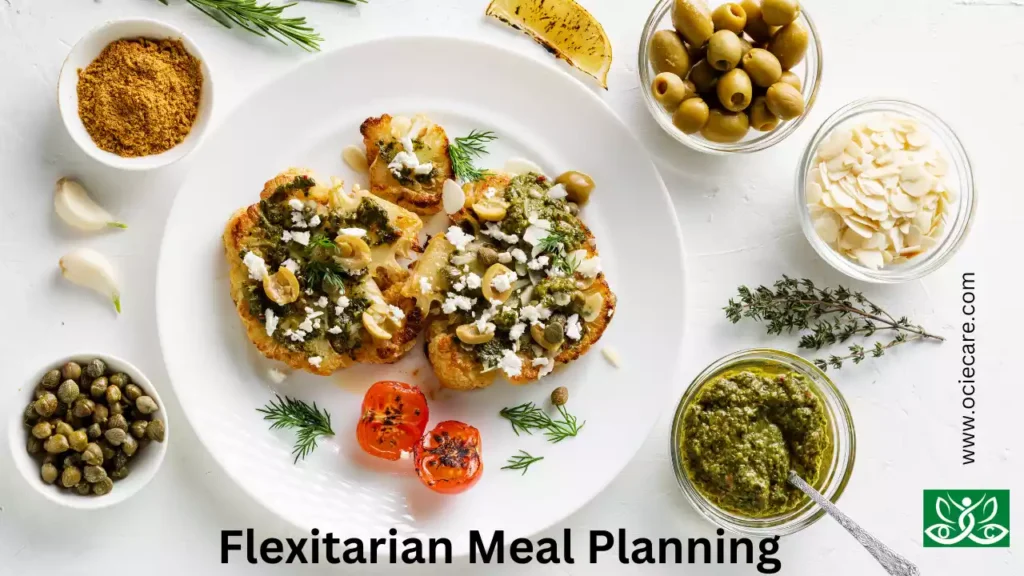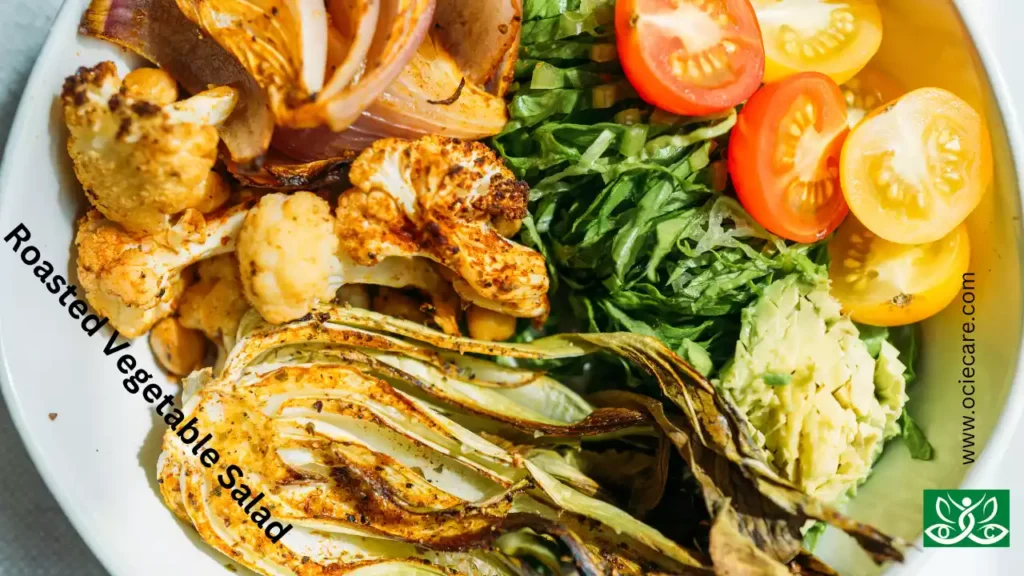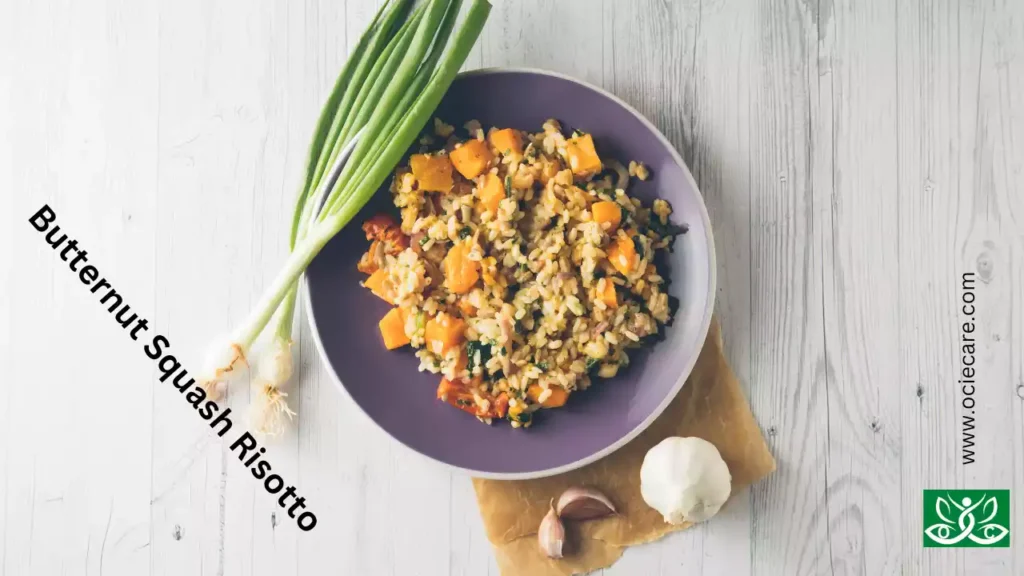Discover the flexible and balanced world of the Flexitarian Diet lifestyle. Embrace a nourishing diet that blends plant-based foods with occasional meat indulgence, promoting improved health and reduced environmental impact. Uncover the benefits, transition tips, and delicious recipes that make the Flexitarian Diet a sustainable and enjoyable choice for all.
Find answers to frequently asked questions and embark on a journey of well-being with the support of valuable resources and a vibrant online community. Embrace the best of both plant and animal-based worlds with the Flexitarian lifestyle.

Empowering Benefits of Flexitarian Diet Living
Introduction
In a world where health and well-being have taken center stage, the Flexitarian Diet has emerged as a revolutionary approach to eating that promises numerous benefits while accommodating individual preferences. Unlike rigid dietary plans, the Flexitarian Diet celebrates flexibility and freedom, making it a popular choice for those seeking a balanced lifestyle without stringent restrictions.
Benefits of the Flexitarian Diet: Nourishing Body and Soul
- One of the key advantages of the Flexitarian Diet is its emphasis on plant-based foods while still allowing the occasional inclusion of meat.
- This unique blend ensures that you enjoy the goodness of nutrient-dense vegetables, fruits, and whole grains while savoring the flavors of your favorite meats.
- By striking this harmonious balance, the Flexitarian Diet offers a plethora of benefits, ranging from improved cardiovascular health to enhanced weight management.
- But that’s not all; the Flexitarian Diet also presents a sustainable path towards a greener planet.
- By reducing our reliance on animal products, we contribute to minimizing our carbon footprint and preserving precious natural resources for future generations.
How the Flexitarian Diet Works?
Embarking on the Flexitarian Diet is embarking on a culinary adventure filled with vibrant colors and delectable tastes.
- At its core, the diet encourages a mindful shift towards plant-based meals, focusing on vegetables, fruits, legumes, and whole grains.
- These wholesome ingredients form the foundation of your plate, nourishing your body with essential vitamins, minerals, and fiber.
- But fear not, the Flexitarian Diet understands the occasional cravings for animal-derived foods.
- That’s why it allows for the inclusion of lean meats, poultry, and fish in moderation.
- This flexibility ensures that you never feel deprived while staying committed to your health goals.
Moreover, the Flexitarian Diet isn’t just about what you eat; it’s about how you eat. Embracing mindful eating practices and savoring each bite enhances your overall dining experience and fosters a deeper connection with your food.
Embark on Your Flexitarian Journey Today!
Are you ready to transform your approach to nutrition and well-being? Embrace the Flexitarian Diet today and experience a world of culinary delights and healthful benefits. Whether you’re a seasoned food enthusiast or just starting your gastronomic expedition, the Flexitarian Diet welcomes you with open arms.
Explore more about this flexible and empowering dietary lifestyle by joining our community of Flexitarians. Together, we can make a positive impact on our health, the planet, and future generations.
Continue reading to take the first step towards a more vibrant and fulfilling life with the Flexitarian Diet.
Flexitarian Diet Basics
A. What is a Flexitarian Diet?
The Flexitarian Diet is a flexible and balanced approach to eating that combines the best of both worlds – plant-based foods and occasional meat consumption.
- This dietary lifestyle celebrates the abundance of fruits, vegetables, legumes, and whole grains while allowing for the inclusion of lean meats, poultry, and fish in moderation.
- It’s all about embracing a more sustainable and mindful way of eating that promotes optimal health and well-being.
B. Flexitarian Diet Principles: Finding Harmony in Food Choices
I. Plant-Based Emphasis:
- At the heart of the Flexitarian Diet is an emphasis on plant-based foods.
- Vegetables, fruits, whole grains, nuts, and seeds take center stage, providing a rich source of essential nutrients, antioxidants, and fiber.
II. Occasional Meat Inclusion: Unlike strict vegetarian or vegan diets, the Flexitarian Diet permits the occasional consumption of meat.
- When choosing meat, lean options are preferred to minimize saturated fat intake.
III. Mindful Eating:
- Flexitarians are encouraged to practice mindful eating, savoring each bite and paying attention to hunger and fullness cues.
- This fosters a deeper connection with food and enhances overall satisfaction.
IV. Gradual Transition:
- Flexitarianism isn’t an all-or-nothing approach.
- It allows for a gradual transition, making it accessible to individuals with varying dietary preferences and goals.
V. Sustainability:
- By reducing meat consumption, Flexitarians contribute to a more sustainable food system, lessening the environmental impact and promoting ethical practices.
C. Flexitarian vs. Vegetarian vs. Vegan: Understanding the Differences
I. Flexitarian Diet:
- As described, Flexitarians primarily follow a plant-based diet but occasionally consume meat and animal products in moderation.
II. Vegetarian Diet:
- Vegetarians abstain from meat, including poultry and fish, but may consume dairy products and eggs.
III. Vegan Diet:
- Vegans avoid all animal-derived products, including meat, dairy, eggs, and even honey, opting for a wholly plant-based lifestyle.
While all three dietary choices have their unique benefits, the Flexitarian Diet stands out for its flexibility and practicality, making it an attractive option for those seeking a more balanced and sustainable approach.
D. Tips for Transitioning to a Flexitarian Diet: Embrace the Change
I. Start Gradually:
- Begin by incorporating more plant-based meals into your weekly menu.
- Experiment with new recipes and flavors to discover exciting vegetarian and vegan options.
II. Meatless Mondays:
- Designate one day a week to go meatless.
- Use this opportunity to explore creative plant-based dishes and build your repertoire of delicious meat-free meals.
III. Explore Meat Alternatives:
- There is a wide array of meat substitutes available, such as tofu, tempeh, seitan, and plant-based burgers.
- Experiment with these alternatives to find what suits your taste and preferences.
IV. Build Balanced Plates:
- Ensure your meals include a variety of vegetables, whole grains, and plant-based proteins to achieve a well-rounded and nutritious diet.
V. Educate Yourself:
- Learn more about the environmental and health benefits of the Flexitarian Diet to stay motivated and informed on your journey.
Remember, the key to success is to be flexible and kind to yourself. Embrace the journey towards a more flexible and plant-centric way of eating, and you’ll be well on your way to a healthier, happier lifestyle as a proud Flexitarian!
Keto Diet for Weight Loss and Wellness
Flexitarian Meal Planning

Embarking on a Flexitarian Diet opens up a world of culinary possibilities, where plant-based goodness harmonizes with occasional meat indulgence. To make the most of this flexible and healthful lifestyle, mastering the art of Flexitarian meal planning is essential.
Here’s a guide to crafting balanced and delectable meals that celebrate the best of both plant and animal-based worlds.
A. Planning Balanced Flexitarian Meals: The Art of Harmony
I. Plant-Based Foundation:
- Build your meals around a variety of nutrient-rich plant foods.
- Load your plate with colorful vegetables, such as leafy greens, vibrant bell peppers, and succulent tomatoes.
- Incorporate whole grains like quinoa, brown rice, or whole wheat pasta to provide satisfying energy.
II. Protein Power:
- Flexitarians can enjoy an array of plant-based proteins like beans, lentils, chickpeas, and tofu.
- For occasional meat additions, opt for lean choices like skinless chicken or turkey and incorporate fish, such as salmon or cod, to boost Omega-3 fatty acids.
III. Dairy or Dairy Alternatives:
- Include dairy products like Greek yogurt, cottage cheese, or milk if desired.
- For those seeking plant-based options, almond milk, soy yogurt, or cashew cheese can be excellent alternatives.
IV. Healthy Fats:
- Add healthy fats like avocado, nuts, and seeds to your meals for extra flavor and satiety.
- These fats are beneficial for heart health and overall well-being.
V. Fruits for Sweetness:
- Satisfy your sweet tooth naturally with a variety of fruits.
- From juicy berries to succulent mangoes, fruits provide a delightful way to round off your meals.
B. Weekly Meal Prep Ideas: Convenience with Nutritious Flair
Meal prepping is a Flexitarian’s best friend, ensuring that delicious and wholesome meals are always within reach. Here are some ideas to streamline your weekly meal prep:
I. Mason Jar Salads:
- Prepare colorful salads in mason jars with layers of vegetables, grains, and protein.
- Seal the jars, and they’ll stay fresh throughout the week.
II. Freezer-Friendly Soups:
- Whip up hearty and veggie-packed soups that can be portioned and frozen for effortless lunches or dinners.
III. Roasted Veggie Medley:
- Roast a medley of seasonal vegetables with a drizzle of olive oil and your favorite herbs.
- Use them as side dishes or as a base for Buddha bowls.
IV. Pre-Cut Fruits and Veggies:
- Pre-cut fruits and veggies make for easy snacks and can be incorporated into quick stir-fries or smoothies.
C. Seasonal Meal Planning: Savoring Nature’s Bounty
Embrace the changing seasons and the abundance of fresh produce they bring. Seasonal meal planning not only offers flavorful meals but also supports local farmers and reduces environmental impact. Get creative with these ideas:
I. Spring:
- Enjoy vibrant asparagus and artichokes, tender baby greens, and the first juicy strawberries of the year.
II. Summer:
- Savor sweet corn, ripe tomatoes, luscious watermelon, and an array of colorful peppers.
III. Autumn:
- Delight in hearty butternut squash, crisp apples, earthy mushrooms, and an abundance of leafy greens.
IV. Winter:
- Warm up with comforting soups featuring winter squash and root vegetables, and relish the sweetness of citrus fruits.
D. Sample Flexitarian Meal Plans: A Week of Delicious Flexibility
I. Monday:
Breakfast:
- Overnight oats with almond milk, chia seeds, and mixed berries.
Lunch:
- Quinoa salad with roasted vegetables, chickpeas, and a lemon-tahini dressing.
Dinner:
- Grilled portobello mushrooms with a side of steamed broccoli and quinoa.
II. Tuesday:
Breakfast:
- Smoothie with spinach, banana, peanut butter, and soy milk.
Lunch:
- Lentil and vegetable soup with a side of mixed greens.
Dinner:
- Baked cod with mango-avocado salsa and a side of wild rice.
III. Wednesday:
Breakfast:
- Greek yogurt parfait with honey, granola, and fresh strawberries.
Lunch:
- Falafel wrap with hummus, cucumber, and tomatoes.
Dinner:
- Stir-fried tofu with broccoli, bell peppers, and brown rice.
IV. Thursday:
Breakfast:
- Scrambled eggs with sautéed spinach and whole grain toast.
Lunch:
- Caprese salad with heirloom tomatoes, mozzarella, and basil.
Dinner:
- Grilled chicken with sweet potato fries and a side of green beans.
V. Friday:
Breakfast:
- Acai bowl with coconut flakes, banana, and almond butter.
Lunch:
- Spinach and feta stuffed bell peppers served with a side of quinoa.
Dinner:
- Vegetable curry with cauliflower, carrots, and peas, served over basmati rice.
VI. Saturday:
Breakfast:
- Avocado toast with cherry tomatoes and a sprinkle of feta cheese.
Lunch:
- Sushi rolls filled with avocado, cucumber, and tempura sweet potato.
Dinner:
- Mushroom and black bean burgers served with a mixed green salad.
VII. Sunday:
Breakfast:
- Blueberry pancakes made with almond flour and served with maple syrup.
Lunch:
- Caesar salad with grilled chicken or tofu and whole grain croutons.
Dinner:
- Spaghetti with marinara sauce and a side of garlic bread.
How Vegan Diet Helps to Improve | Magically On Body & Mind, Digestion & Weight
Flexitarian Recipes
The Flexitarian Diet offers a wealth of culinary possibilities, combining the goodness of plant-based ingredients with occasional meaty indulgence. Whether you’re starting your day with a wholesome breakfast, enjoying a delightful lunch, savoring a delicious dinner, or seeking on-the-go snacks.
Here are some mouthwatering Flexitarian recipes that cater to your dietary preferences while providing a healthy and balanced experience.
A. Breakfast: Rise and Shine with Flexitarian Delights
I. Quick and Easy Flexitarian Breakfasts:

a. Avocado Toast with Poached Eggs:
- Smashed avocado on whole-grain toast topped with perfectly poached eggs and a sprinkle of chili flakes for a touch of heat.
b. Fruit and Nut Yogurt Parfait:
- Layer Greek yogurt with a mix of fresh fruits like berries, kiwi, and mango, then add a crunchy mix of nuts and granola for added texture.
c. Green Smoothie Bowl:
- Blend spinach, kale, banana, and almond milk until smooth.
- Pour the vibrant green smoothie into a bowl and top with sliced fruits, chia seeds, and a dollop of almond butter.
II. High-Protein Breakfast Ideas:
a. Chickpea Flour Pancakes:
- Whisk chickpea flour, almond milk, and a pinch of baking powder to make a protein-rich pancake batter.
- Serve with fresh berries and a drizzle of maple syrup.
b. Tofu Scramble:
- Crumble firm tofu and sauté it with onions, bell peppers, and spinach. Season with turmeric, cumin, and nutritional yeast for a savory breakfast delight.
c. Quinoa Breakfast Bowl:
- Cook quinoa with your favorite plant-based milk and stir in sliced bananas, a spoonful of almond butter, and a sprinkle of cinnamon.
B. Lunch: Plant-Powered and Tasty
I. Plant-based Lunch Recipes:

a. Roasted Vegetable Salad:
- Toss a medley of roasted vegetables (such as sweet potatoes, beets, and Brussels sprouts) with arugula, cherry tomatoes, and a lemon-tahini dressing.
b. Mediterranean Quinoa Bowl:
- Mix cooked quinoa with cucumber, Kalamata olives, cherry tomatoes, red onion, and crumbled feta cheese. Drizzle with olive oil and lemon juice.
c. Caprese Avocado Salad:
- Layer sliced avocado, fresh mozzarella, and tomato slices on a plate.
- Sprinkle with basil leaves, balsamic glaze, and a dash of sea salt.
II. Flexitarian Sandwiches and Wraps:
a. Grilled Veggie Panini:
- Load whole-grain bread with grilled zucchini, eggplant, bell peppers, and pesto.
- Toast until crispy and enjoy a warm, hearty sandwich.
b. Hummus and Veggie Wrap:
- Spread hummus on a whole wheat wrap, then fill it with shredded carrots, cucumber, spinach, and roasted red peppers. Roll it up and enjoy!
c. Mushroom and Swiss Burger:
- Grill portobello mushroom caps and serve them on a bun with Swiss cheese, lettuce, tomato, and a dollop of Dijon mustard.
C. Dinner: Satisfying and Versatile
I. Vegetarian Dinners with Flexitarian Options:

a. Butternut Squash Risotto:
- Cook Arborio rice in vegetable broth with sautéed butternut squash, onions, and garlic.
- Stir in parmesan cheese or a plant-based alternative for added creaminess.
b. Eggplant Parmesan:
- Layer thinly sliced eggplant with marinara sauce and mozzarella, then bake until bubbly and golden.
- Serve over whole wheat pasta.
c. Stuffed Bell Peppers:
- Stuff bell peppers with a mixture of cooked quinoa, black beans, diced tomatoes, and spices.
- Top with cheese or a vegan cheese substitute and bake until tender.
II. Flexitarian-friendly Meat Dishes:
a. Teriyaki Salmon Bowl:
- Grill or bake salmon fillets and serve over a bowl of brown rice, steamed broccoli, and sliced avocado.
- Drizzle with teriyaki sauce for an irresistible flavor.
b. Lemon Herb Chicken:
- Marinate chicken breasts in lemon juice, olive oil, and herbs like rosemary and thyme.
- Grill or bake until cooked through and serve with roasted vegetables.
c. Turkey and Lentil Chili:
- Brown ground turkey and sauté onions and garlic.
- Add canned lentils, diced tomatoes, and chili seasoning. Simmer until flavors meld together.
D. Snacks: Nourishing Bites for Anytime
I. Healthy Snacks for Flexitarians:

a. Kale Chips:
- Toss kale leaves with olive oil, sea salt, and nutritional yeast.
- Bake until crispy for a nutritious and addictive snack.
b. Energy Bites:
- Mix oats, almond butter, honey, and a variety of seeds and dried fruits.
- Roll into bite-sized balls for a quick pick-me-up.
c. Roasted Chickpeas:
- Toss chickpeas with olive oil and your favorite spices.
- Roast until crispy for a crunchy and protein-packed snack.
II. Snack Ideas for On-the-go:
a. Trail Mix:
- Create a customized mix of nuts, seeds, dried fruits, and dark chocolate chips for a satisfying and portable snack.
b. Fruit Kabobs:
- Skewer fresh fruits like grapes, berries, and melon for a colorful and convenient way to enjoy nature’s sweetness.
c. Veggie Sticks with Hummus:
- Cut carrots, celery, and bell peppers into sticks and pair them with a small container of hummus for a refreshing and nutritious snack.
Flexitarian Shopping List
Embracing a Flexitarian Diet means filling your kitchen with a diverse range of ingredients that cater to both plant-based and occasional meat-based meals. With a well-stocked pantry and fresh produce at hand, you can effortlessly create flavorful and nourishing dishes that celebrate the best of both worlds.
Here’s a comprehensive Flexitarian shopping list to guide you on your culinary journey:
A. Staples for a Flexitarian Pantry: A Foundation of Flavor
I. Whole Grains:
- Brown rice, quinoa, whole wheat pasta, rolled oats, and whole grain bread provide a nutritious base for your meals.
II. Canned Beans and Lentils:
- Stock up on chickpeas, black beans, kidney beans, and lentils for protein-packed and versatile meal options.
III. Nuts and Seeds:
- Almonds, walnuts, chia seeds, flaxseeds, and pumpkin seeds add crunch, healthy fats, and nutrients to your dishes.
IV. Nut Butter:
- Almond butter, peanut butter, or cashew butter offer richness and flavor to smoothies, sauces, and breakfasts.
V. Canned Tomatoes:
- Keep diced tomatoes, crushed tomatoes, and tomato sauce handy for quick and easy pasta sauces and stews.
VI. Vegetable Broth:
- Use vegetable broth as a base for soups, risottos, and other savory dishes.
VII. Olive Oil:
- Opt for extra virgin olive oil for cooking and dressings, providing heart-healthy fats and a delightful taste.
VIII. Herbs and Spices:
- Have a variety of herbs and spices such as basil, thyme, oregano, cumin, paprika, and turmeric to enhance the flavors of your meals.
B. Fresh Produce Guide: A Rainbow of Nutrients
I. Leafy Greens:
- Spinach, kale, arugula, and Swiss chard are nutrient-dense options for salads, smoothies, and sautés.
II. Colorful Vegetables:
- Stock up on broccoli, cauliflower, bell peppers, carrots, zucchini, and sweet potatoes for endless culinary creations.
III. Fresh Fruits:
- Choose a variety of fruits like apples, berries, oranges, bananas, and avocados for snacking and smoothies.
IV. Fresh Herbs:
- Keep a supply of fresh herbs such as basil, cilantro, parsley, and mint to add brightness to your dishes.
V. Citrus Fruits:
- Lemons, limes, and oranges add zing to dressings, marinades, and beverages.
c. Meat and Meat Alternatives: Flexibility in Protein Choices
I. Chicken and Turkey:
- Choose lean cuts of chicken and turkey for occasional meat-based meals.
II. Fish:
- Opt for sustainable options like salmon, cod, or tilapia for a source of Omega-3 fatty acids.
III. Tofu:
- This versatile soy-based protein can be marinated, grilled, or stir-fried to suit your taste.
IV. Tempeh:
- With a nutty flavor and firm texture, tempeh is a great meat substitute for various dishes.
V. Chickpeas and Lentils:
- These legumes serve as hearty and protein-rich alternatives in curries, stews, and salads.
D. Condiments and Flavor Enhancers: Elevating Your Culinary Creations
I. Soy Sauce or Tamari:
- Add depth to stir-fries and marinades with soy sauce or its gluten-free alternative, tamari.
II. Hummus:
- A creamy and flavorful spread for sandwiches, wraps, or veggie dipping.
III. Tahini:
- Use tahini in dressings, dips, or sauces for a nutty and sesame-infused taste.
IV. Balsamic Vinegar:
- Drizzle balsamic vinegar over salads or roasted vegetables for a tangy touch.
V. Hot Sauce:
- Add a spicy kick to your meals with your favorite hot sauce.
VI. Nutritional Yeast:
- Sprinkle nutritional yeast on dishes for a cheesy flavor, especially in plant-based recipes.
With this Flexitarian shopping list, your pantry and refrigerator will be stocked with an array of ingredients that allow you to create wholesome and flavorful meals that align with your Flexitarian lifestyle. Enjoy the flexibility and deliciousness that comes with blending the best of plant-based and occasional meat-based foods!
Flexitarian Lifestyle
The Flexitarian lifestyle is not only about embracing a flexible and balanced diet but also about fostering overall well-being through exercise, stress management, and mindful eating.
By integrating these aspects into your daily routine, you can optimize your health and create a sustainable and fulfilling way of living.
A. Incorporating Exercise with Flexitarian Diet: Nurturing a Healthy Body
I. Cardiovascular Activities:
- Engage in activities that get your heart pumping, such as brisk walking, jogging, cycling, or swimming.
- These exercises help improve cardiovascular health and boost your energy levels.
II. Strength Training:
- Incorporate strength training exercises, like lifting weights or bodyweight exercises, to build muscle, improve bone health, and enhance metabolism.
III. Flexibility and Balance:
- Practice activities that enhance flexibility and balance, such as yoga or Pilates.
- These exercises not only improve physical flexibility but also promote relaxation and mental well-being.
IV. Outdoor Activities:
- Embrace nature and enjoy outdoor activities like hiking, gardening, or playing sports, which not only provide physical benefits but also uplift your mood and spirit.
V. Consistency:
- Aim for regular exercise by finding activities you enjoy.
- Remember that consistency is key to reaping the full benefits of an active lifestyle.
B. Stress Management and Mindful Eating: Nurturing a Healthy Mind
I. Meditation and Mindfulness:
- Incorporate meditation or mindfulness practices into your daily routine.
- Taking time to pause, breathe, and focus on the present moment can reduce stress and increase self-awareness.
II. Mindful Eating:
- Pay attention to your body’s hunger and fullness cues while eating.
- Chew slowly, savor each bite and take note of the flavors and textures of your food.
- This practice fosters a healthier relationship with food and reduces overeating.
III. Healthy Coping Mechanisms:
- Find healthy ways to cope with stress, such as engaging in hobbies, spending time with loved ones, or practicing relaxation techniques.
IV. Limiting Processed Foods:
- Minimize the consumption of highly processed foods and opt for whole, nutrient-dense foods.
- Fresh fruits, vegetables, whole grains, and lean proteins support both physical and mental well-being.
Mind-Body Connection: Recognize the link between your emotions and eating habits. Instead of turning to food as a coping mechanism, seek other ways to manage emotions, such as journaling or seeking support from friends or professionals.
C. Flexitarianism for Families: Nurturing Health Together
I. Family Meal Planning:
- Involve your family in meal planning and preparation.
- Create a diverse menu that accommodates different taste preferences and dietary needs.
II. Cooking Together:
- Make cooking a family affair by involving everyone in the kitchen.
- Encourage children to try new fruits, vegetables, and recipes.
III. Educational Resources:
- Provide age-appropriate educational resources to your family members about the Flexitarian Diet and its benefits.
- This helps foster a shared understanding and commitment to healthier choices.
IV. Lead by Example:
- Be a role model for your family by embracing a Flexitarian lifestyle and demonstrating positive attitudes towards food, exercise, and mindfulness.
V. Flexibility in Transition:
- If transitioning to a Flexitarian Diet as a family, start gradually and be open to trying new foods and recipes together.
D. Eating Out as a Flexitarian: Navigating Social Settings
I. Menu Exploration:
- Look for restaurants that offer a variety of plant-based and meat-based options.
- Many establishments now provide Flexitarian-friendly choices.
II. Customization:
- Don’t hesitate to ask for modifications to the menu to suit your preferences.
- Most restaurants are willing to accommodate special requests.
III. Appetizers and Side Dishes:
- Opt for plant-based appetizers or side dishes as your main meal.
- Vegetable-based salads, soups, and grain bowls are excellent choices.
IV. Sharing Plates:
- Share multiple dishes with your dining companions to experience a variety of flavors and incorporate more plant-based options into your meal.
V. Mindful Portions:
- Be mindful of portion sizes when eating out. You can take leftovers home or split a meal to avoid overeating.
By integrating exercise, stress management, and mindful eating into your Flexitarian lifestyle, you create a holistic approach to well-being that supports your physical, mental, and emotional health. Embrace the flexibility and mindfulness that comes with the Flexitarian lifestyle, and experience the rewards of a balanced and nourishing way of living.
Flexitarian Resources
As you embark on your Flexitarian journey, a wealth of resources awaits to guide and inspire you along the way. From informative books and cookbooks to vibrant online communities and scientific studies, these resources will enrich your understanding of the Flexitarian Diet and help you embrace a more flexible and balanced lifestyle.
A. Recommended Books and Cookbooks: Gaining Insight and Culinary Delights
I. “The Flexitarian Diet” by Dawn Jackson Blatner:
- This comprehensive guide introduces the principles of the Flexitarian Diet, offering practical tips, meal plans, and delicious recipes to help you adopt a flexible and sustainable eating approach.
II. “VB6: Eat Vegan Before 6:00” by Mark Bittman:
- Although not solely focused on Flexitarianism, this book presents a similar concept, encouraging plant-based eating until dinnertime while allowing flexibility for occasional meat consumption.
III. “The Plant-Based Flexitarian Cookbook” by Dawn Jackson Blatner:
- Explore a variety of creative and flavorful Flexitarian recipes in this cookbook, perfect for individuals seeking to embrace more plant-centric meals without completely giving up animal-based foods.
IV. “The Mediterranean Flexitarian Diet Cookbook” by Frank Jackson:
- Discover the fusion of the Flexitarian and Mediterranean diets in this cookbook, offering an abundance of delicious and heart-healthy recipes.
B. Online Communities and Support Groups: Connecting with Like-Minded Flexitarians
I. r/Flexitarian:
- This subreddit is a vibrant online community where Flexitarians share recipes, meal ideas, and tips on incorporating more plant-based foods into their diets.
II. Flexitarian Facebook Groups:
- Various Facebook groups dedicated to Flexitarianism provide a supportive space for individuals to share their Flexitarian journeys, exchange recipes, and offer encouragement.
III. Flexitarian Blogs:
- Many individuals and nutrition experts maintain blogs centered around the Flexitarian lifestyle, sharing personal experiences, informative articles, and tasty recipes.
C. Flexitarian Blogs and Websites: A Wealth of Knowledge at Your Fingertips
I. Flexitarian Nutrition:
- Run by registered dietitian Dawn Jackson Blatner, this website offers insights into Flexitarianism, along with useful meal planning and recipe resources.
II. The Flexitarian:
- This online platform provides a collection of Flexitarian recipes, articles, and tips for adopting a flexible approach to eating.
III. Plant-Based on a Budget:
- Although not exclusively Flexitarian-focused, this website offers practical advice for incorporating more plant-based foods into your diet while being mindful of your budget.
D. Scientific Studies on Flexitarian Diet: Evidence-Based Support
I. “The Flexitarian Diet: A Nutritionally Sound Way to Improve Markers of Health in Sedentary Individuals” (2019):
- This study published in the Journal of the American Dietetic Association examines the potential health benefits of the Flexitarian Diet.
II. “The Flexitarian Diet and Its Potential Health-Protective Effects in the Light of the ‘Planetary Health Diet’ Recommendations” (2020):
- This research published in Nutrients explores how the Flexitarian Diet aligns with the planetary health diet principles, considering both human health and environmental sustainability.
III. “Flexitarian Diets and Health: A Review of the Evidence-Based Literature” (2021):
- This review published in Frontiers in Nutrition examines the scientific literature on Flexitarian diets and their potential impacts on health and well-being.
By exploring these recommended resources, you can deepen your understanding of the Flexitarian Diet, access a supportive community, and gain inspiration from a plethora of recipes and meal ideas. Empower yourself with knowledge and connect with others on the same journey to embrace the flexibility and nourishment that come with the Flexitarian lifestyle.
Conclusion
In conclusion, the Flexitarian lifestyle offers a balanced and flexible approach to eating that celebrates both plant-based and occasional meat-based meals. By incorporating a diverse range of nutrient-rich foods, individuals can nourish their bodies while contributing to a more sustainable food system.
The foundation of the Flexitarian Diet lies in plant-based foods, including an abundance of vegetables, fruits, whole grains, legumes, nuts, and seeds. This plant-centric focus ensures a wealth of vitamins, minerals, antioxidants, and fiber, promoting optimal health and well-being.
Flexitarians also have the freedom to enjoy lean meats, poultry, fish, and other animal-derived products in moderation. This flexibility not only allows for occasional indulgence but also accommodates varying dietary preferences, making it accessible to a wide range of individuals.
The lifestyle emphasizes mindful eating, encouraging individuals to savor each bite and pay attention to hunger and fullness cues. By cultivating a deeper connection with food, Flexitarians can develop a healthier relationship with eating and reduce the risk of overeating.
Furthermore, incorporating exercise and stress management into the Flexitarian lifestyle enhances overall well-being. Engaging in regular physical activity, such as cardio, strength training, and flexibility exercises, supports cardiovascular health, builds strength, and promotes mental clarity.
Embracing stress management techniques and mindfulness practices helps individuals cope with daily challenges and fosters a positive outlook on life. By reducing stress and cultivating self-awareness, Flexitarians can make healthier choices and nurture a harmonious mind-body connection.
Flexitarianism is not limited to individuals alone; it can extend to families as well. Engaging in family meal planning, cooking together, and providing educational resources can create a supportive and unified approach to healthy eating.
When eating out, Flexitarians can navigate social settings with ease by exploring menu options, customizing dishes, and sharing plates with dining companions. This adaptability allows for enjoyable and satisfying dining experiences while adhering to Flexitarian principles.
A wide array of resources, such as books, cookbooks, online communities, blogs, websites, and scientific studies, supports Flexitarians on their journey. These resources provide valuable information, inspiring recipes, and a sense of community, ensuring that individuals have the knowledge and encouragement they need to thrive in their Flexitarian lifestyle.
In essence, the Flexitarian lifestyle promotes a harmonious balance of nourishment, movement, and mindfulness. Embracing this flexible and sustainable approach to eating can lead to improved health, reduced environmental impact, and a more enjoyable and fulfilling way of life. Whether you’re a seasoned Flexitarian or just beginning your journey, the path to well-being and satisfaction is paved with delicious and diverse choices, embracing the best of both plant and animal-based worlds.
FAQs
Q. What is a Flexitarian Diet?
A. A Flexitarian Diet is a flexible and balanced approach to eating that combines plant-based foods with occasional meat consumption. Flexitarians primarily focus on vegetables, fruits, whole grains, legumes, nuts, and seeds while incorporating lean meats, poultry, fish, and dairy products in moderation.
Q. What are the benefits of a Flexitarian Diet?
A. The Flexitarian Diet offers several benefits, including improved cardiovascular health, weight management, increased fiber intake, and reduced environmental impact due to lower meat consumption. It also provides a diverse array of nutrients from plant-based sources.
Q. Can I lose weight on a Flexitarian Diet?
A. Yes, the Flexitarian Diet can support weight loss when combined with a balanced calorie intake and regular exercise. The emphasis on plant-based foods, which are typically lower in calories and higher in fiber, can contribute to weight management.
Q. Is the Flexitarian Diet suitable for vegetarians and vegans?
A. Yes, the Flexitarian Diet can be adapted to suit vegetarians and vegans. Vegetarians can focus on plant-based foods and dairy, while vegans can replace animal products with plant-based alternatives like tofu, tempeh, and plant-based milk.
Q. How can I transition to a Flexitarian Diet?
A. Transitioning to a Flexitarian Diet can be gradual. Start by incorporating more plant-based meals into your weekly menu and reducing meat consumption. Experiment with new recipes and discover plant-based proteins that you enjoy.
Q. Will I get enough protein on a Flexitarian Diet?
A. Yes, a well-planned Flexitarian Diet can provide adequate protein. Plant-based sources like beans, lentils, tofu, and quinoa are rich in protein. Incorporating lean meats and fish in moderation can also supplement protein intake.
Q. Can children follow a Flexitarian Diet?
A. Yes, children can follow a Flexitarian Diet with proper planning to ensure they receive essential nutrients for growth and development. It’s essential to include a variety of nutrient-rich foods in their meals.
Q. Are there any health risks associated with the Flexitarian Diet?
A. The Flexitarian Diet is generally considered safe and nutritious. However, individuals should ensure they get sufficient nutrients like iron, vitamin B12, and omega-3 fatty acids from plant-based sources or supplements.
Q. Can I eat out as a Flexitarian?
A. Yes, eating out as a Flexitarian is possible. Look for restaurants with diverse menu options that cater to both plant-based and meat-based preferences. Customizing dishes and sharing plates with dining companions can offer flexibility.
Q. Can I build muscle on a Flexitarian Diet?
A. Yes, it is possible to build muscle on a Flexitarian Diet. By consuming adequate protein from plant-based and animal-derived sources and engaging in strength training exercises, muscle development can be supported.
I don’t think the title of your article matches the content lol. Just kidding, mainly because I had some doubts after reading the article.